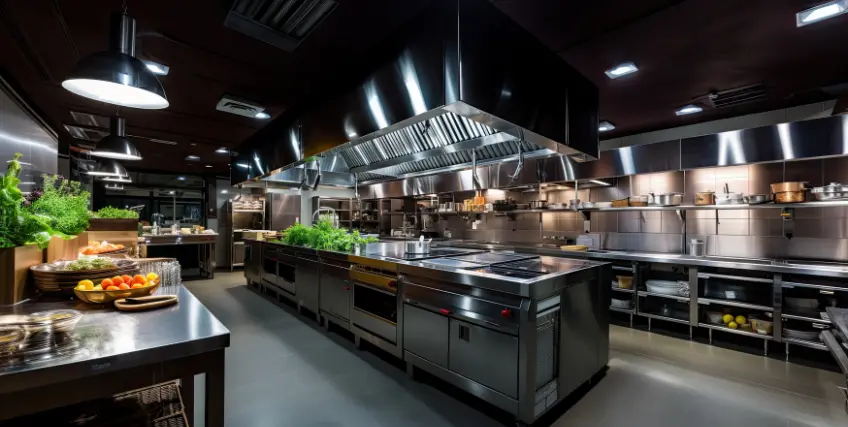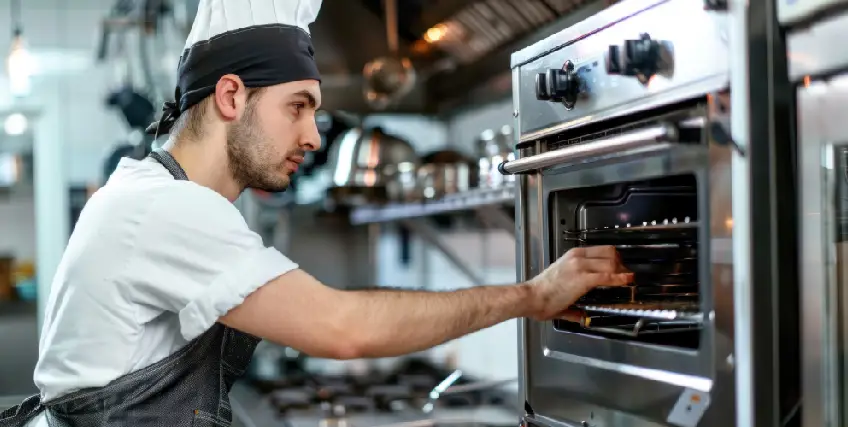A Guide to Restaurant Equipment Leasing for New Owners
April 07, 2025 | Last Updated on: April 07, 2025

The U.S. restaurant industry is thriving. According to reports, restaurant industry surpassed $1 trillion in sales for the first time ever in 2024. But opening a restaurant isn't cheap. One of the biggest expenses is Equipment. Commercial ovens, reach-in refrigerators, dishwashers, griddles, and mixers can cost tens of thousands upfront.
For new restaurant owners, buying everything outright can drain working capital fast. That’s where a restaurant equipment lease comes in. Leasing lets you get what you need now—without the heavy upfront price tag. You pay affordable monthly payments, maintain cash flow, and preserve capital.
This article will explain how restaurant equipment leasing works, different lease types, benefits, and how to choose the right plan. Whether you’re searching for restaurant equipment for lease near me or exploring restaurant equipment finance options, this guide covers it all.
What Is Restaurant Equipment Leasing?
A restaurant equipment lease is a financing solution that allows restaurant owners to rent commercial kitchen equipment for a fixed term. Instead of paying large sums upfront, you make monthly payments—keeping your cash flow healthy.
This leasing model is popular among startup restaurant owners and food truck operators. It’s often easier to qualify for than a business loan and is usually faster to secure.
You lease items like:
- Convection ovens
- Freezers
- Griddles
- Fryers
- Ice machines
- Refrigerators
- Mixers
- Dishwashers
- Dispensers
Some restaurant equipment leasing companies offer lease to own restaurant equipment plans, where you eventually take full ownership. Others let you return or upgrade equipment after the lease term.
Leasing also helps with maintenance and warranties. Many agreements include servicing, which reduces repair costs.
How Restaurant Equipment Leasing Works
Here’s how a restaurant equipment lease works, step by step:
- Choose your equipment: List what you need—freezers, reach-in refrigerators, fryers, griddles, etc.
- Find a leasing provider: Compare restaurant equipment leasing companies for terms, rates, and inventory.
- Apply: Complete an application. Many companies look at credit score, time in business, and income.
- Review the lease agreement: Key things to look at—monthly payments, lease duration, end-of-term options, interest rates.
- Receive equipment: Approved leases get fulfilled quickly. Equipment is delivered and installed.
- Make lease payments: Monthly lease payments are predictable and often lower than financing.
- End of lease options: You can renew, return, or buy—especially with lease to own restaurant equipment.
This model benefits business owners who want to conserve cash, maintain working capital, and avoid large down payments. Many restaurant equipment finance firms even offer seasonal payment options, ideal for businesses with fluctuating revenue.
Types of Restaurant Equipment Leases
Here are six types of restaurant equipment lease structures you’ll encounter:
1. Fair Market Value (FMV) Lease
An FMV lease lets you return the equipment at the end of the term or purchase it at its current market value. It offers low monthly payments and works well if you don’t want long-term ownership. Ideal for tech-driven equipment that becomes outdated quickly.
2. $1 Buyout Lease
This lease allows you to own the equipment for just $1 after the lease ends. Monthly payments are slightly higher than FMV leases, but it's a clear path to ownership. Perfect for long-lasting equipment like griddles, fryers, or reach-in refrigerators.
3. 10% Purchase Option Lease
At lease-end, you can purchase the equipment for 10% of its original cost. It strikes a balance between low payments and eventual ownership. Best for restaurant owners who might want to keep the equipment but aren’t fully committed.
4. Operating Lease
This short-term lease allows for frequent equipment upgrades. It doesn’t appear on your balance sheet as a liability, making it attractive for restaurants focused on newer gear or seasonal equipment.
5. Capital Lease
A capital lease acts more like a purchase. The equipment appears on your books as an asset. You’re responsible for maintenance and repairs. It suits restaurants that plan to keep the equipment long-term.
6. Lease to Own Restaurant Equipment
This popular option involves fixed monthly payments over a set term. At the end, you own the equipment. It offers predictability and aligns well with budget planning. Great for small businesses avoiding traditional financing.
Benefits of Restaurant Equipment Leasing
1. Lower Upfront Costs
A restaurant equipment lease helps you avoid big down payments. You can open your kitchen fully equipped without touching your savings or business credit line.
2. Cash Flow Flexibility
Leasing spreads costs across months, helping maintain healthy cash flow. It frees up capital for other business expenses like marketing, staff, or rent.
3. Tax Advantages
Lease payments are usually a deductible business expense. You can write them off on your taxes, reducing your overall tax burden. However, it is advised to consult a tax professional regarding any tax implications.
4. Easy Equipment Upgrades
Leasing gives you access to new equipment when technology advances. You’re not stuck with outdated dishwashers or convection ovens.
5. Simple Application Process
Compared to loans, leasing involves less paperwork. Many restaurant equipment leasing companies approve applications in a day or two.
6. Warranties & Maintenance
Many leases include repair and service coverage. You avoid out-of-pocket expenses when equipment breaks.
Conclusion
Starting a restaurant is expensive, but a restaurant equipment lease makes it easier. You avoid heavy upfront costs, access quality commercial kitchen equipment, and keep your finances flexible.
From lease to own restaurant equipment to FMV leases, there are options for every kind of food service operation—whether it’s a dine-in restaurant, ghost kitchen, or food truck.
By working with trusted restaurant equipment leasing companies, you can get the tools you need to cook, clean, store, and serve efficiently. Explore local vendors or search for restaurant equipment for lease near me to get started.
FAQs
What is a restaurant equipment lease?
A restaurant equipment lease lets restaurant owners rent items like fryers, dishwashers, or ovens. It replaces the need to purchase equipment outright. Leasing helps with cash flow, especially for startups. Providers often include maintenance, and payments are often tax-deductible. Many restaurant equipment leasing companies offer buyout options too.
How do I find restaurant equipment for lease near me?
Search online for local dealers or national providers. You can also ask nearby restaurants for referrals. Look for flexibility, rates, and included services. Some platforms specialize in restaurant equipment for lease near me and offer tailored plans based on business type and location.
What does lease to own restaurant equipment mean?
It means you lease equipment over time with a plan to own it by the end of the term. This model combines flexible payments with eventual ownership. You avoid a lump-sum investment and still keep the gear after making all lease payments.
Are lease payments tax-deductible?
Lease payments are usually classified as business expenses. That means you can write them off during tax season, reducing your overall taxable income.
Can I lease used restaurant equipment?
Some providers offer used equipment leases at lower rates. It’s a good way to save money while still outfitting your kitchen.




